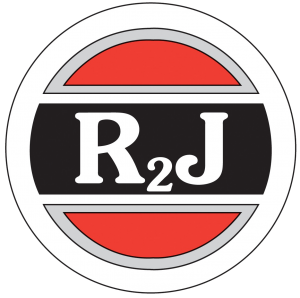Legionella Training: What Facility Teams Need to Know
Aug 28, 2025Why Legionella Training Matters
Facility teams are on the front line when it comes to protecting building water systems against Legionella bacteria. This organism, when allowed to grow in potable water, cooling towers, or hot tubs, can cause Legionnaires’ disease, a severe type of pneumonia that primarily affects individuals with a weakened immune system or underlying chronic disease. Even healthy people can experience mild flu-like illness such as Pontiac fever when exposed to contaminated aerosols.
Outbreaks linked to high-rise apartment complexes, retirement homes, hotels, and hospitals have shown how quickly public health can be compromised when building managers and maintenance teams aren’t properly trained. Ensuring that your staff is appropriately trained in legionella control is no longer optional – it’s a regulatory expectation and a moral responsibility.

The Compliance Landscape
Several regulatory and professional organizations emphasize the need for facility teams to be properly trained and able to carry out their duties in a technically competent manner. To protect public health, organizations like ASHRAE, CDC, and the Centers for Medicare & Medicaid Services (CMS) have developed standards that require proactive water system management. The National Environmental Health Association (NEHA), for example, recommends that professionals involved in facility maintenance receive Legionella training as part of comprehensive water management programs.
Training ensures that responsible persons understand how to manage building water systems safely, follow documented water management protocols, and take corrective action when Legionella risk is detected. These programs often require collaboration across engineering, infection prevention, and safety roles – reinforcing a common language for prevention.
The Cost of Inaction
Facilities that don’t invest in training face:
- Increased risk of outbreaks linked to water features, decorative fountains, or cold water systems
- Potential citations from regulators for failing to maintain a compliant water management plan
- Legal liability when staff are not appropriately trained to identify hazards and perform corrective actions
- Reputational damage when residents, guests, or staff contract Legionnaires’ disease or other illnesses from the water system
For facility operators, legionella training is as much about protecting people as it is about protecting the organization itself. Learn more about R2J’s Legionella Compliance Services to understand how training ties into broader compliance and prevention strategies.
What Legionella Training Includes
Core Knowledge and Skills
Effective legionella training equips facility teams with the knowledge to recognize hazards, implement water management programs, and take corrective action. Training addresses how to manage building water systems – from cold water systems to cooling towers, hot tubs, and decorative water features. Teams learn how Legionella bacteria thrive in warm, stagnant water and how to design, monitor, and maintain systems to reduce risk.
Courses also introduce the fundamentals of legionella control, helping participants understand how biofilms, scale, and organic matter support bacterial survival. By mastering this, staff can spot vulnerabilities in their facility’s plumbing and infrastructure before they escalate into outbreaks.
Training Courses and Continuing Education
Many organizations require training courses to be completed in a technically competent manner, ensuring teams are appropriately trained. For professionals involved in water safety, continuing education units (CEUs) are often available – a useful way to validate training for career development and compliance.
In addition to formal training, there are industry programs such as guilds Legionella training courses, which provide structured curricula aligned with best practices and regulations. These training opportunities establish a common language for engineers, safety officers, and public health professionals, ensuring that everyone is speaking from the same playbook.
Refresher Training and Ongoing Competency
Legionella training is not one-and-done. To ensure teams remain current, facilities should schedule regular refresher training. This ensures tasks like flushing, biocide dosing, and water management program recordkeeping are performed consistently. Teams who receive regular refresher training are better positioned to maintain compliance, identify risk factors, and respond quickly when system anomalies arise.
Refresher courses are especially important in high-risk environments such as hospitals, retirement homes, and high-rise apartment complexes, where a responsible person must be on record and able to respond to any Legionella risk.
Practical Resources and Support
Strong training programs don’t just cover the science – they provide practical resources. Teams gain checklists, monitoring templates, and access to other practical resources that can be used daily in the field. By combining theory with field-ready tools, training ensures facility teams can act in a consistent, technically competent manner.
Learn how R2J supports facilities with compliant Legionella Prevention Plans designed to work alongside training programs.
Implementing Legionella Training in Facility Operations
Industry-Specific Applications
Legionella training is not theoretical – it applies directly to daily facility operations. High-rise apartment complexes, retirement homes, hospitals, and large buildings are prime examples of environments where building water systems are complex and vulnerable. These sites often include potable water, cooling towers, hot tubs, and decorative water features, all of which can harbor Legionella bacteria if not properly managed.
Building managers, infection preventionists, and water treatment suppliers all play a role, but unless teams are appropriately trained, key prevention steps are often missed. Professionals involved in health and safety need to know how to recognize hazards and intervene before problems escalate.
Training as a Risk-Reduction Tool
With proper training, facility staff can:
- Reduce risk of Legionnaires’ disease outbreaks by identifying and correcting vulnerable areas in cold water systems, cooling systems, and decorative water features.
- Support compliance with standards by implementing water management programs and documenting findings.
- Coordinate with public health professionals to share accurate data and respond to inspections.
- Apply a common language that ensures tasks are understood and completed in a technically competent manner.
For many organizations, this training is not just about compliance – it’s about protecting people. Legionella prevention protects both residents and staff, particularly those with a weakened immune system or chronic disease who face an increased risk of severe outcomes.
R2J: Your Partner in Legionella Training and Compliance
At R2J, we don’t just provide checklists – we deliver expert-led Legionella training and compliance support that helps facility teams stay ahead of regulations and protect occupants. Our Certified Water Technologists (CWTs) and compliance specialists ensure your staff are properly trained, your documentation is audit-ready, and your water management programs are aligned with industry standards.
Contact R2J today to schedule a consultation with our experts and ensure your facility’s water systems – and your team – are prepared to manage Legionella risk in a technically competent manner.

